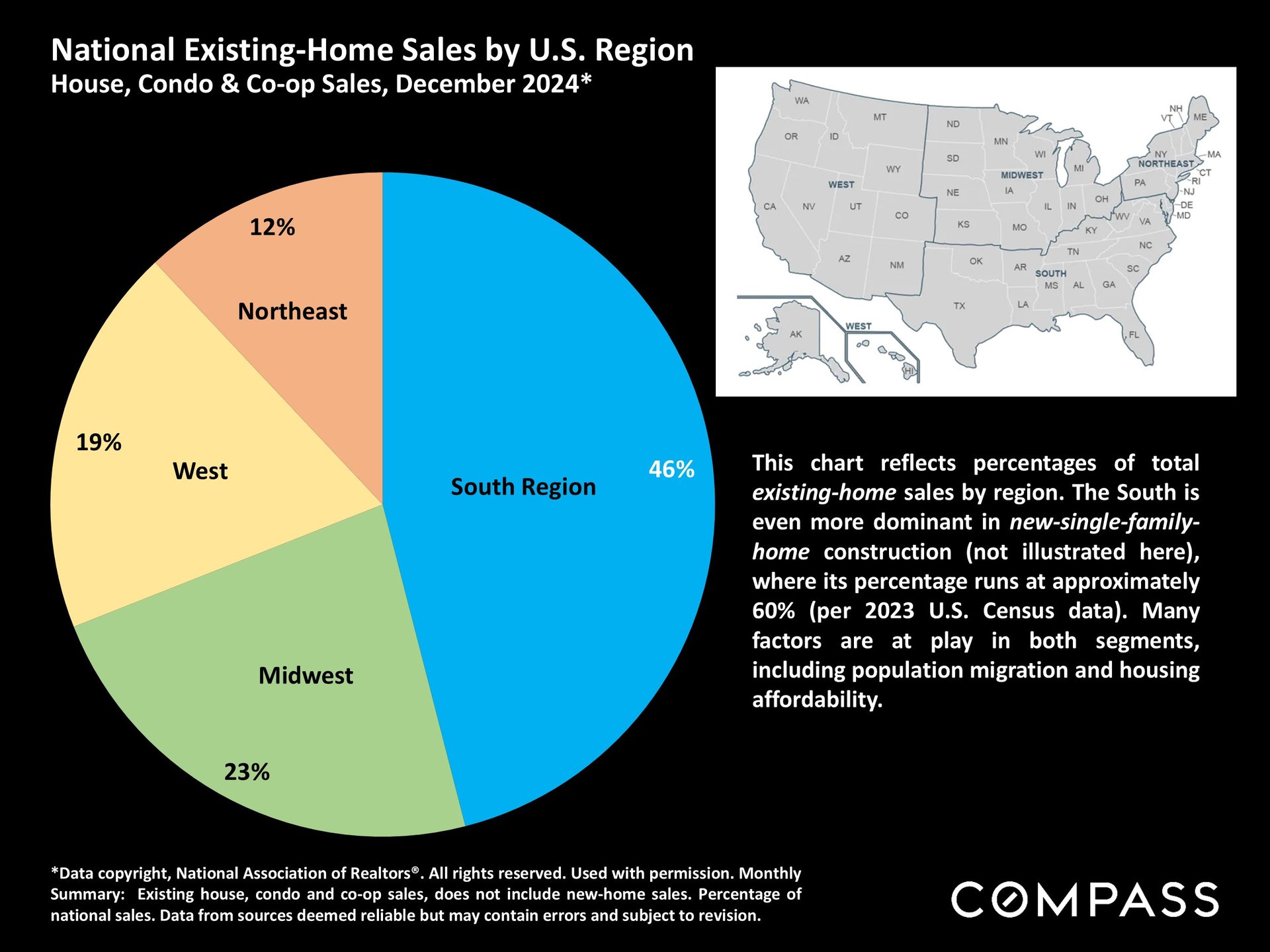Compass National Real Estate Insights: January 2025
The real estate market—ever dynamic and shaped by numerous factors—is kicking off 2025 with fascinating trends and insights worth exploring. Here's a deep dive into the highlights and complexities of the market as it stands today.
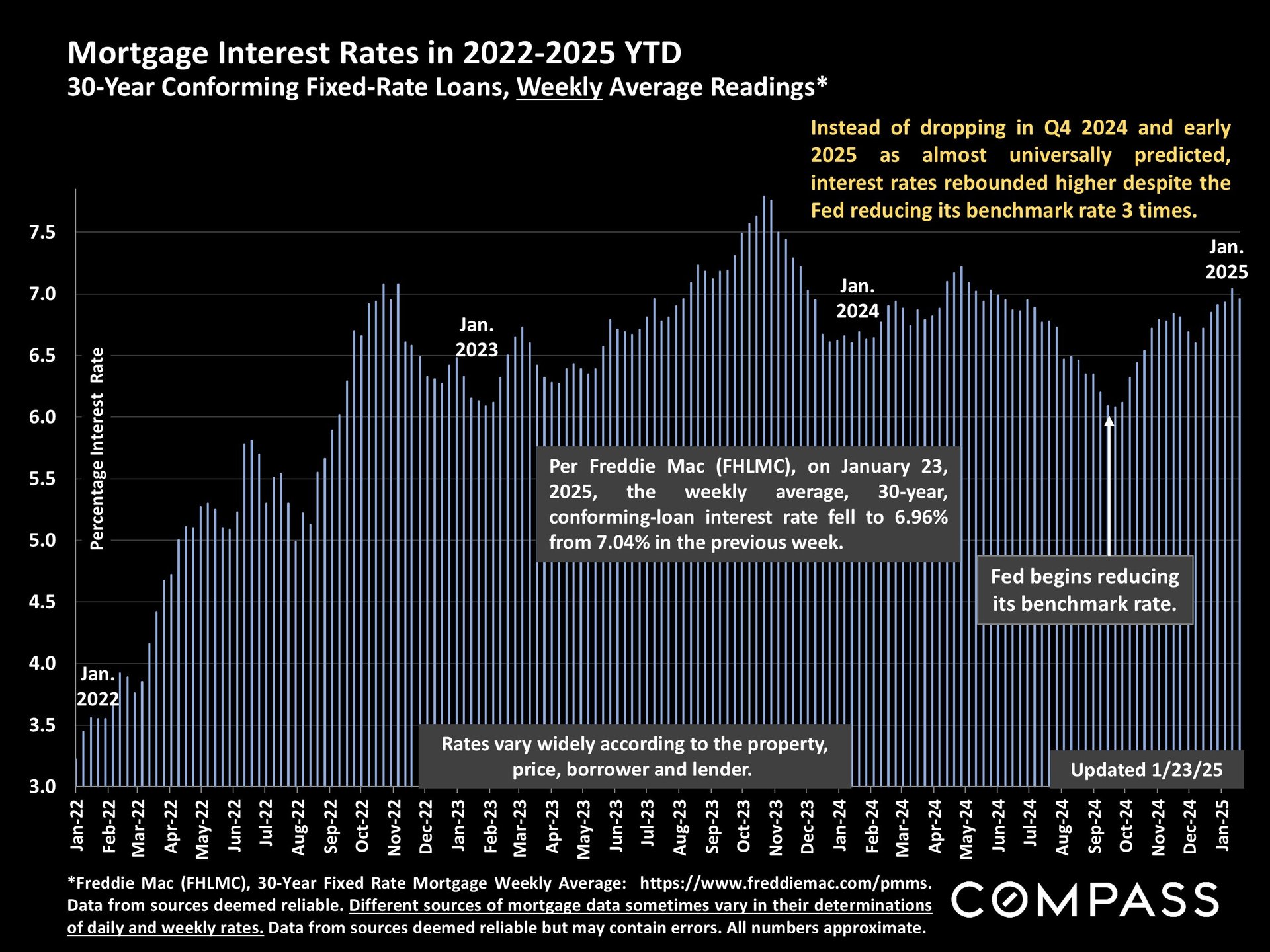
Photo Courtesy of Compass
Mortgage Interest Rates and Sales Prices
After a sharp decline during the 2nd and 3rd quarters of 2024, the average mortgage interest rate rebounded significantly over the last four months. This shift has reverberated throughout the housing market, impacting affordability, buyer activity, and overall market conditions.
Annual median sales prices for existing homes, as illustrated in the latest data, have increased, with condo/co-op prices following a similar upward trend. However, it’s important to note that median sales prices can be influenced by factors beyond fair market value changes. For instance, the rising share of affluent buyers purchasing more expensive homes has pulled median prices upward.
A closer look at approximate year-over-year house-price appreciation rates reveals how population migration, new-home construction, and housing affordability have fueled growth, particularly in the southern regions of the country. These areas have been dominating home sales due to their affordability and appeal, especially as people relocate to regions offering better cost-of-living dynamics.
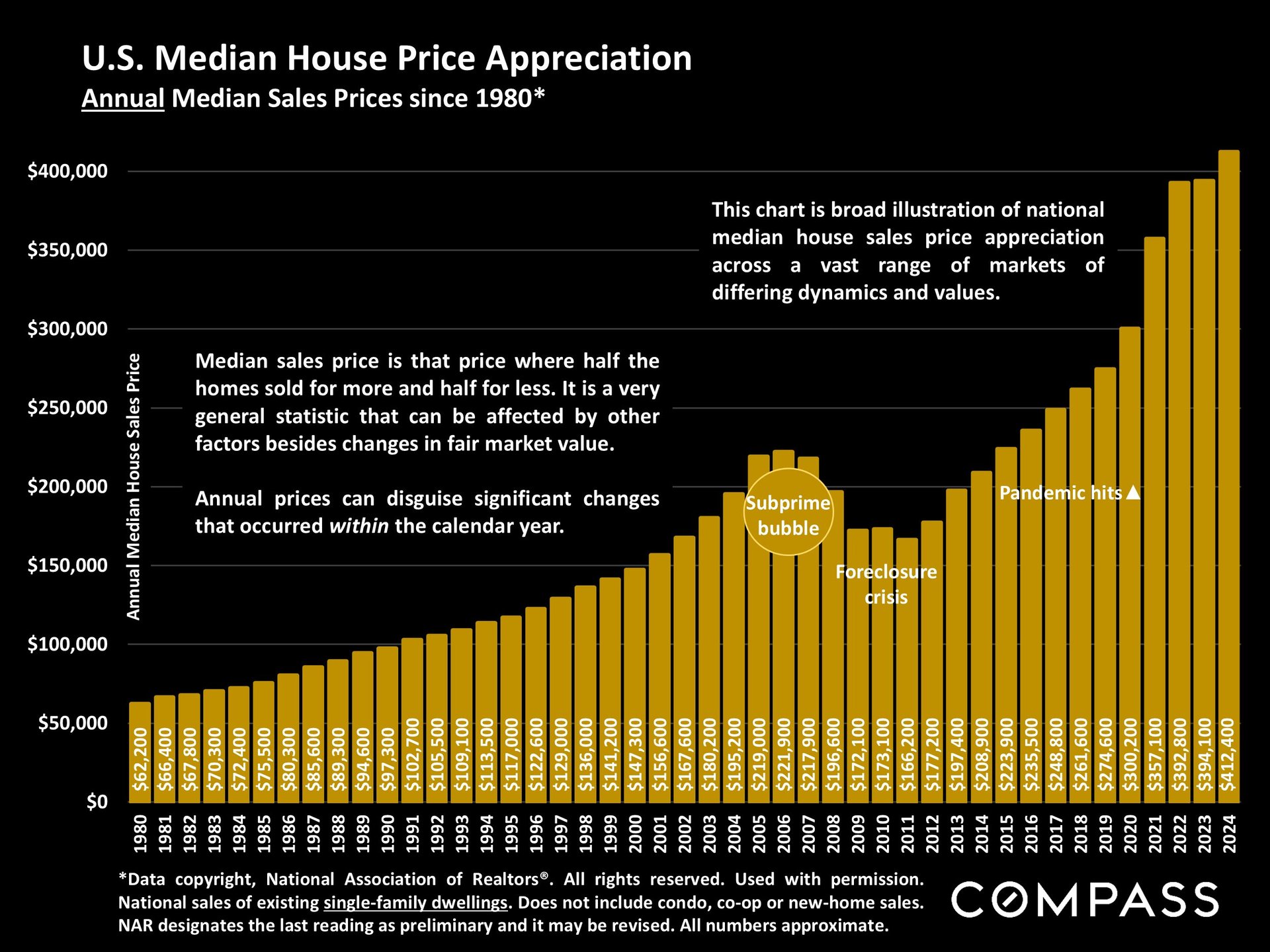
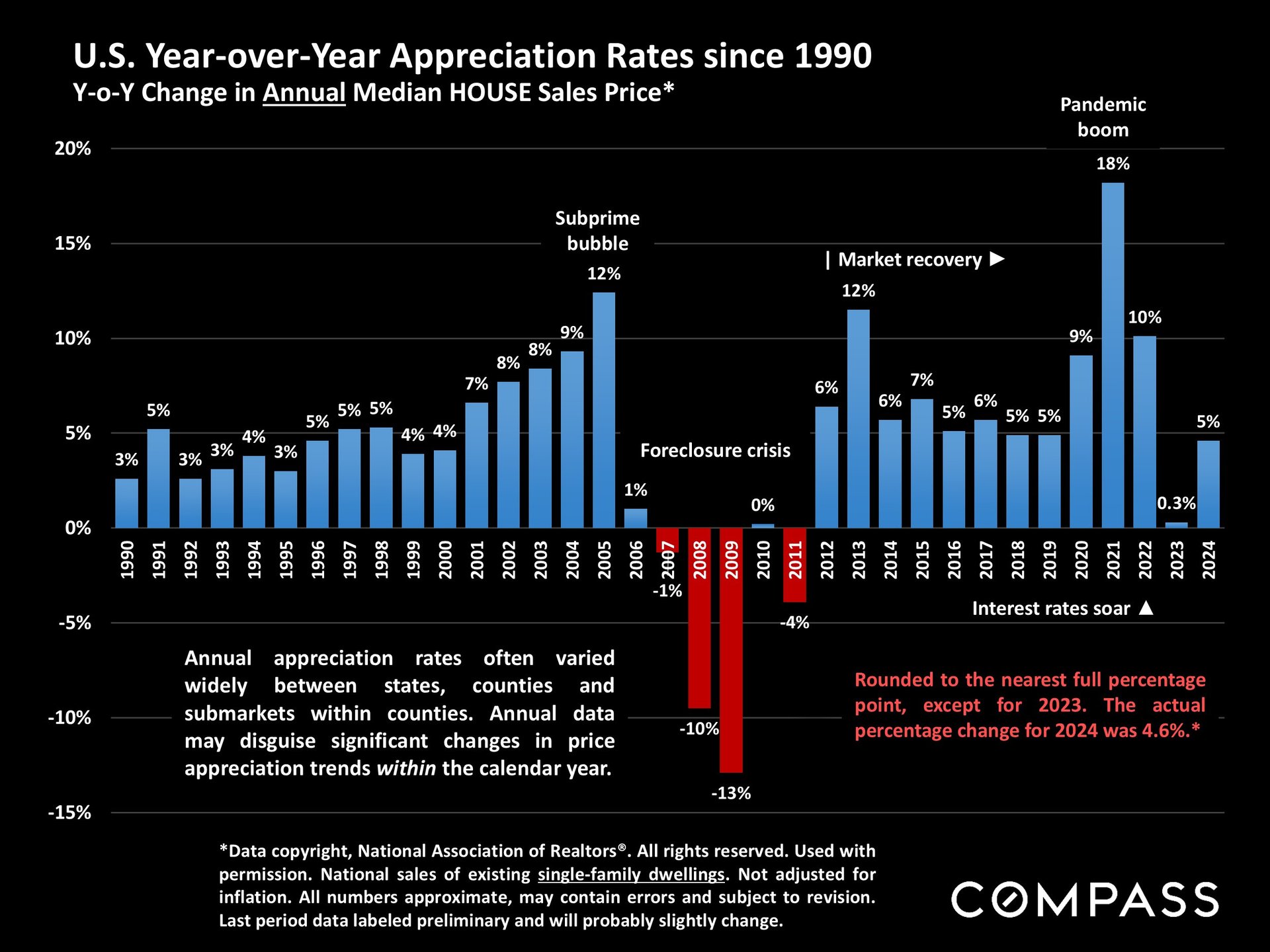
Photos Courtesy of Compass
Regional Home-Price Trends: Long and Short Term
Since 1990, regional home-price appreciation rates have generally moved in parallel, influenced by macroeconomic factors like interest rates, employment trends, and broader economic conditions. However, shorter-term variations remain common due to local market conditions. For example, the southern region has consistently led in home-price appreciation thanks to robust migration trends and strong demand.
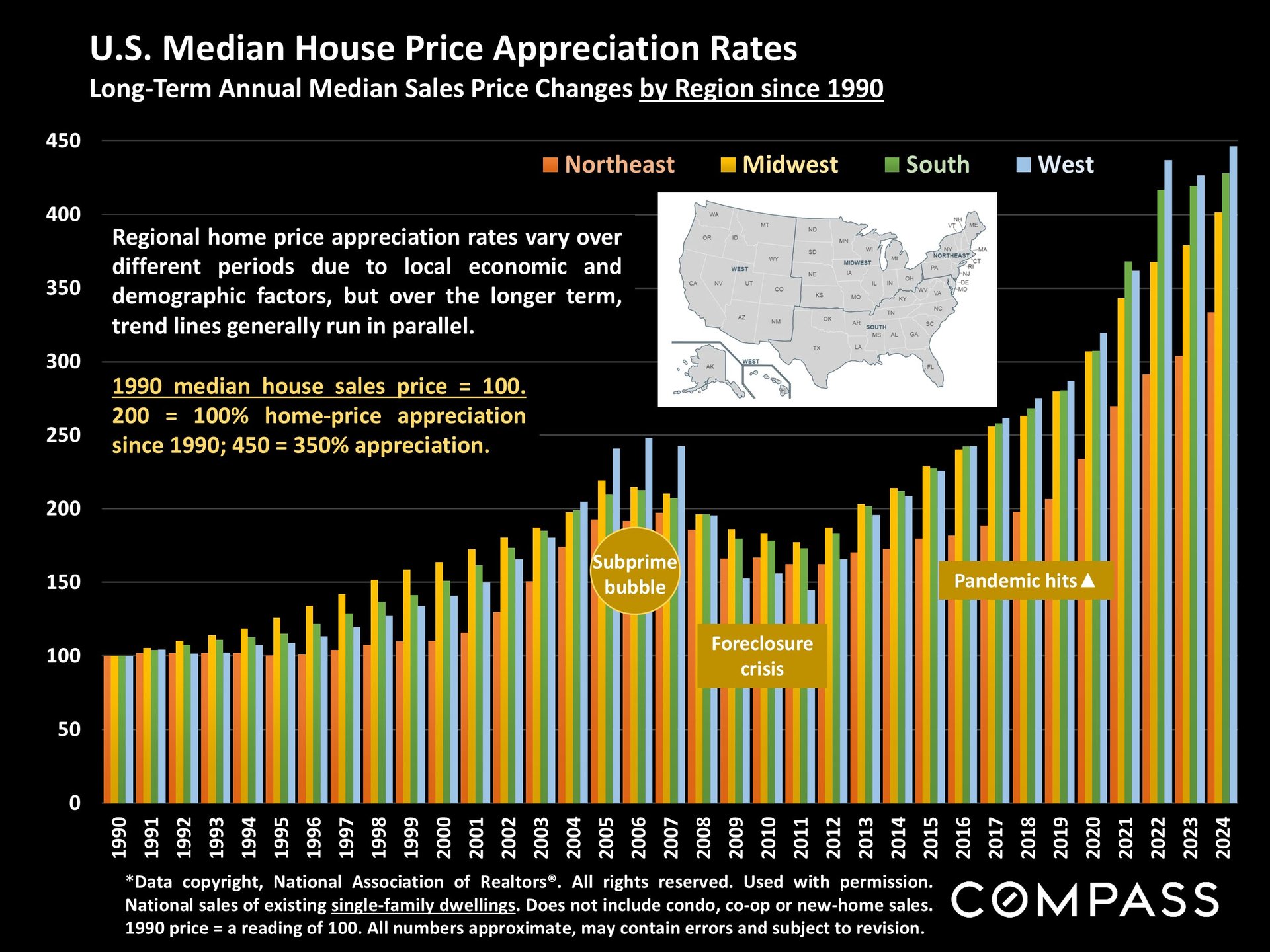
Photo Courtesy of Compass
Supply, Demand, and Listing Activity
2024 marked a notable rebound in the number of new listings compared to 2023, but the overall count remained significantly below long-term historical standards. This limited inventory, combined with cautious seller behavior—driven by reluctance to trade low-interest loans for higher ones—has had a profound impact on supply-and-demand dynamics.
Interestingly, the percentage of cash buyers continues to grow, supported by high home equity levels and strong stock market performance. The monthly average number of homes for sale rose substantially in 2024, reaching its highest point in four years. However, this figure still lagged behind pre-pandemic norms.
Despite the increase in listings, total sales volume in 2024 remained low, creating a cooling effect on national market conditions. Nevertheless, median sales prices continued to rise, reflecting the complex interplay of supply, demand, and buyer demographics.
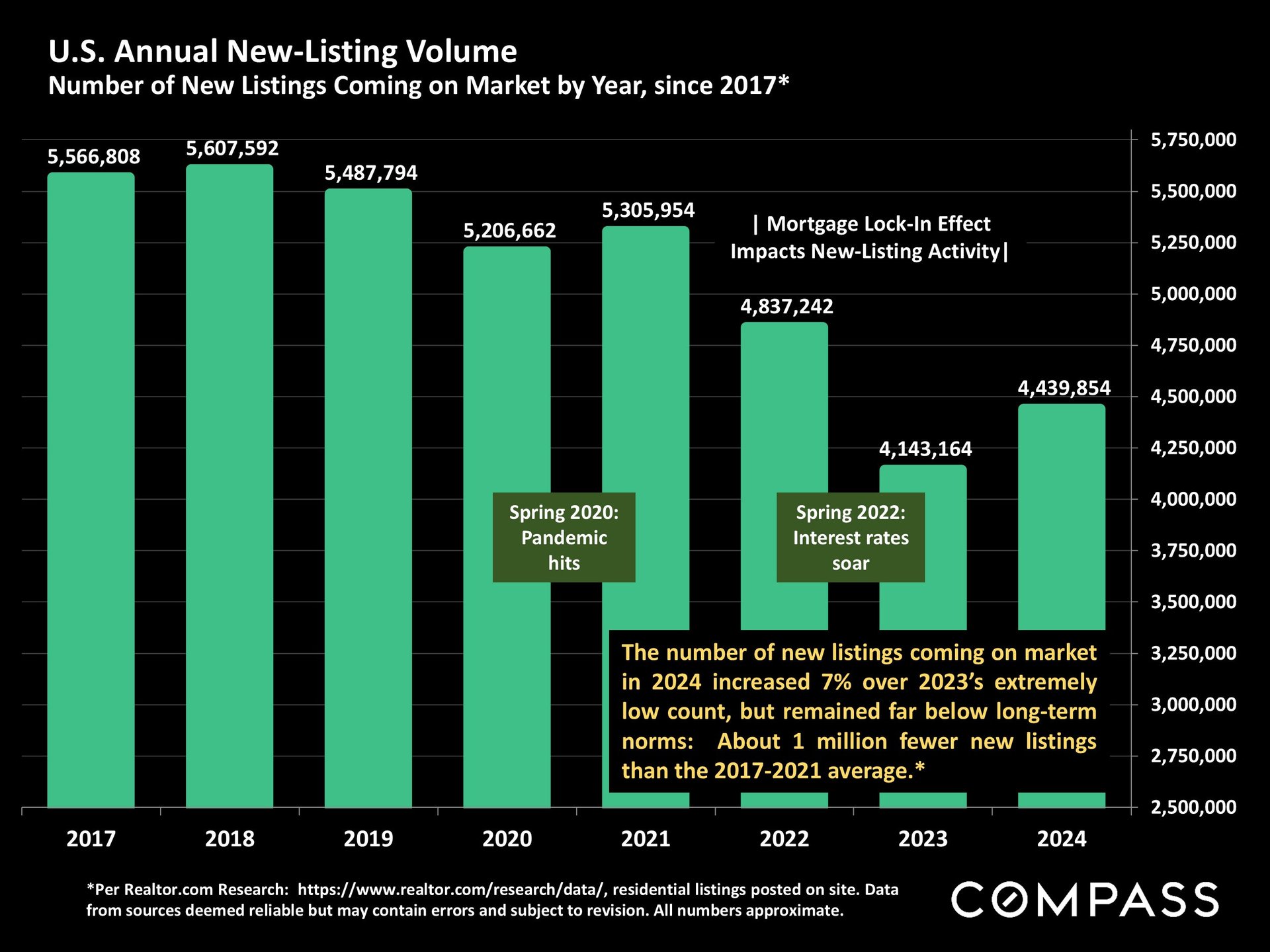
Photo Courtesy of Compass
Seasonality in Real Estate Demand
Seasonality remains a key factor in demand, with monthly sales volumes closely tracking new-listing activity. Some markets, particularly second-home destinations, experience unique trends, with sales peaking during vacation seasons. This underscores the importance of understanding local market conditions, as they can vary widely from national trends.
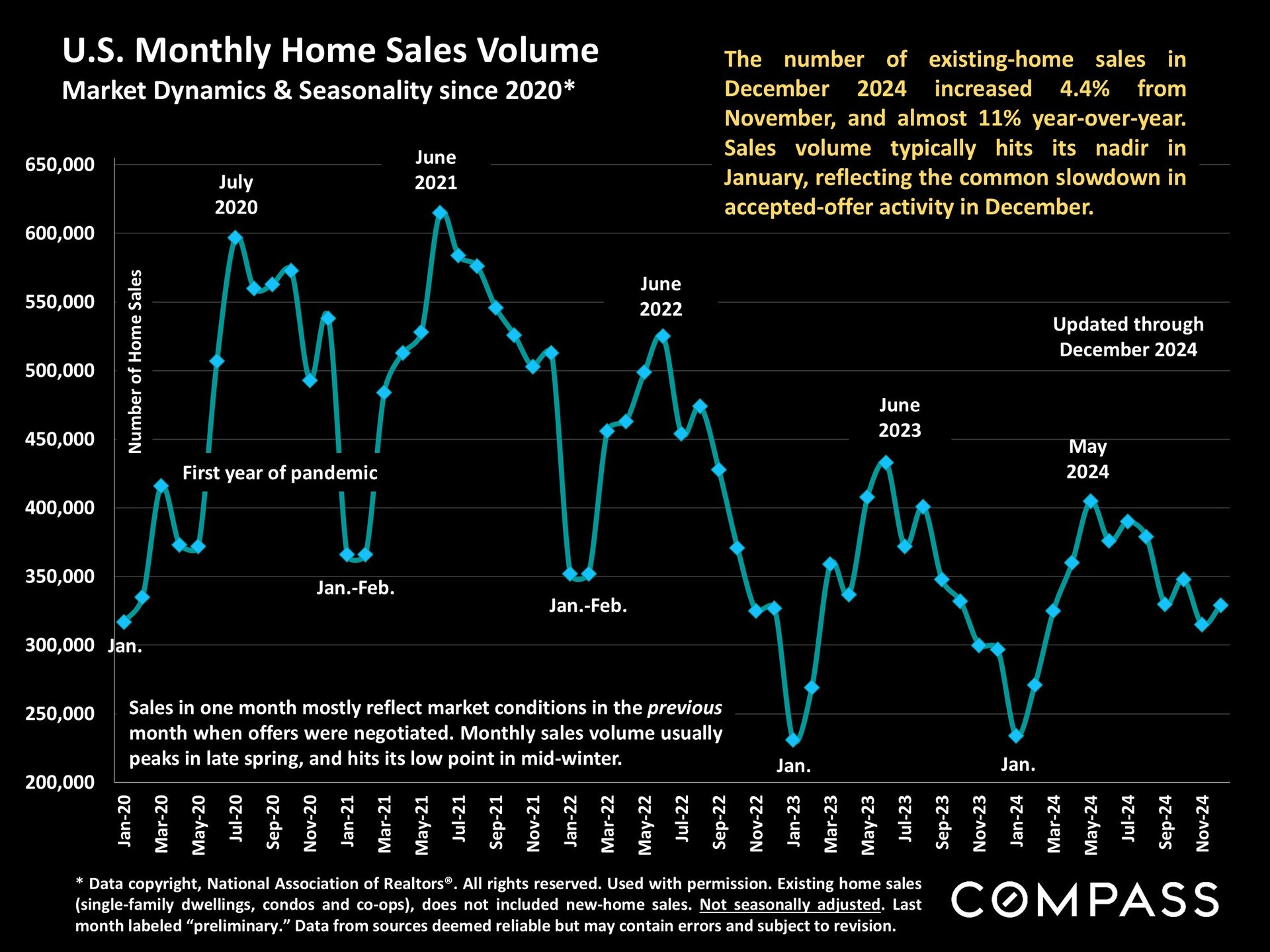
Photo Courtesy of Compass
Population Migration and Growth
U.S. Census population-change maps from the past three years reveal consistent growth across most states. Even states previously experiencing population declines have seen modest increases due to foreign immigration. However, the states with the highest growth rates remain largely unchanged since 2021, with migration patterns favoring affordability, job opportunities, and lifestyle amenities.
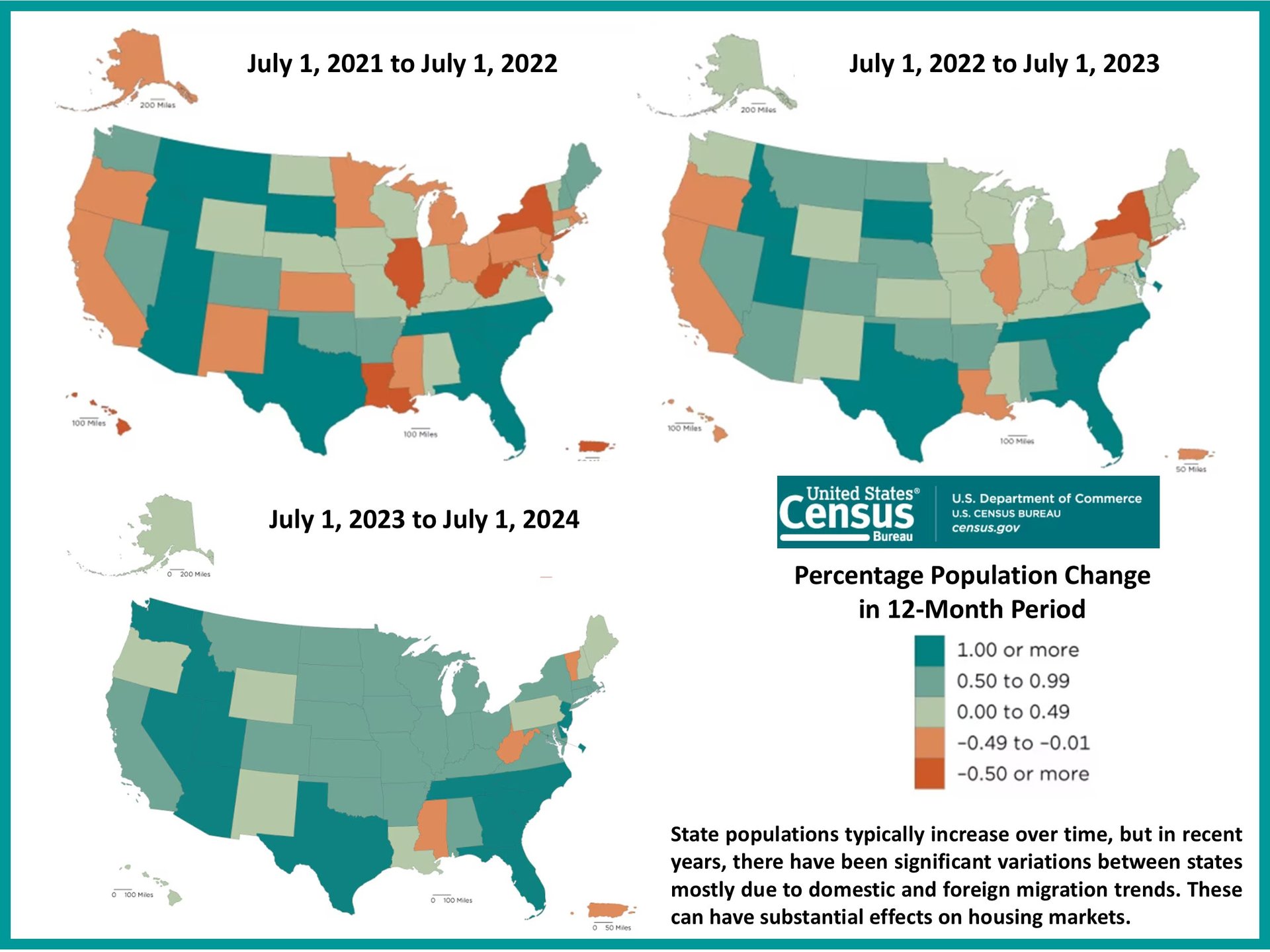
Photo Courtesy of Compass
Homeowner’s Insurance: A Growing Challenge
The availability and cost of homeowner’s insurance have become pressing issues, exacerbated by a challenging 2024 that saw numerous natural disasters. As 2025 begins, insurance costs remain volatile, with significant variations across states. Factors influencing these costs include regional risks, policy changes, and broader economic conditions. Homeowners and buyers alike are urged to stay informed about how these changes might affect their property investments.
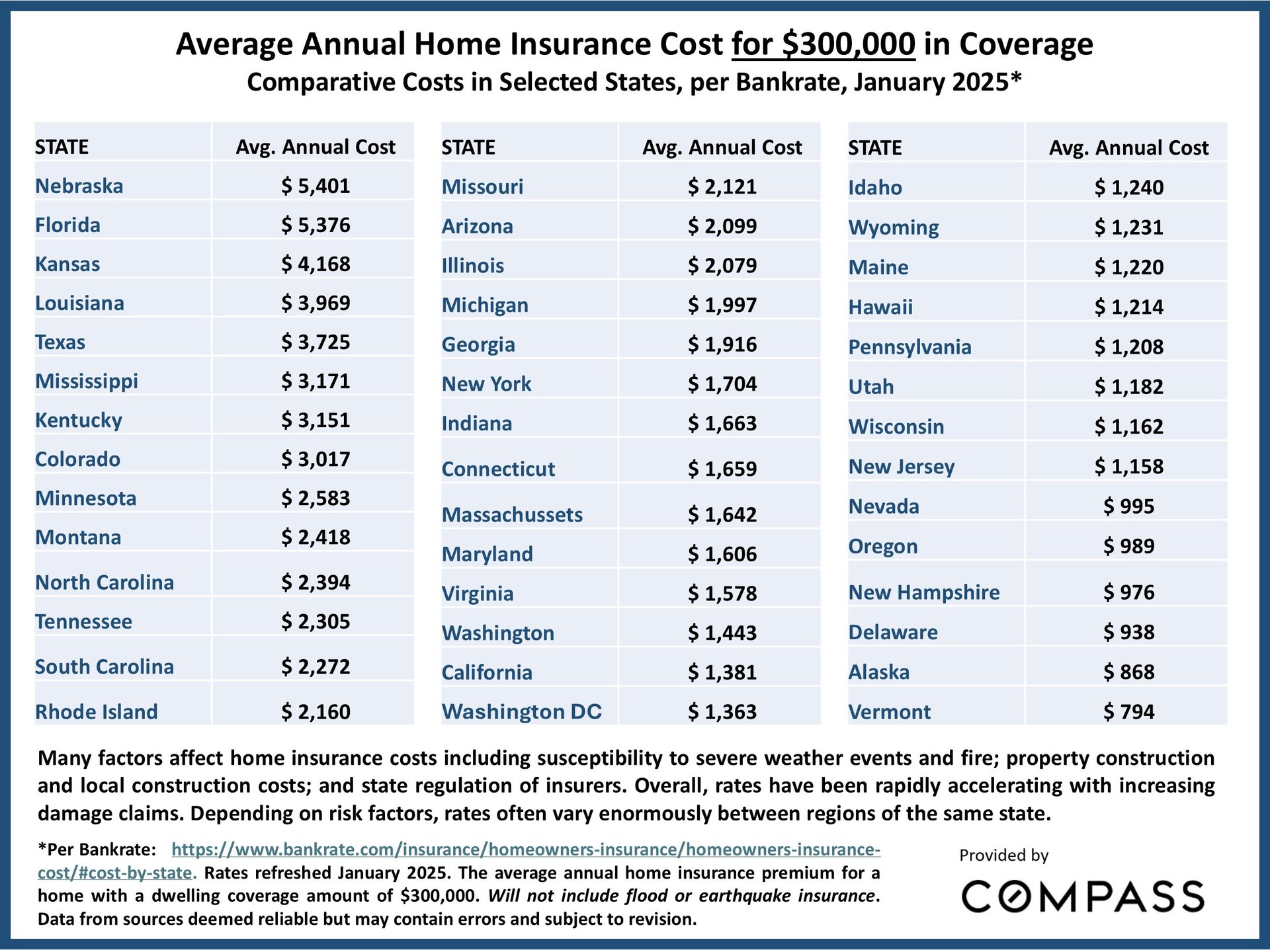
Photo Courtesy of Compass
The U.S. real estate market is entering 2025 shaped by shifting mortgage rates, population trends, and evolving buyer behavior. While national trends provide a broad perspective, local market conditions often diverge, influenced by unique economic and demographic factors. Staying informed and adaptable is crucial in navigating this ever-changing landscape. Our team of local real estate experts can help you navigate all the nuances of market changes. Reach out to The Blackshaw Messel Group today! Our team of local real estate experts can help you navigate all the nuances of market changes. Reach out to The Blackshaw Messel Group today!
Photo Courtesy of Tina Ginter Photography

